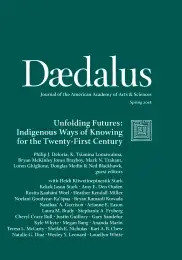Alaska’s Conflicting Objectives
The formal treaty-making period between the U.S. government and Native peoples ended in 1871, only four years after the United States purchased Alaska from Russia. As a result, Alaska Natives did not enter into treaties that recognized their political authority or land rights. Nor, following the end of the treaty-making period, were Alaska Natives granted the same land rights as federally recognized tribes in the lower forty-eight states. Rather, Congress created the Alaska Native Corporations as the management vehicle for conveyed lands in 1971. The unique legal status of these corporations has raised many questions about tribal land ownership and governance for future generations of Alaska Natives. Although Congress created the Native Corporations in its eagerness to settle land claims and assimilate Alaska Natives, Alaska Native cultures and governance structures persisted and evolved, and today many are reasserting the inherent authority of sovereign governments.
The Bureau of Indian Affairs (BIA) reported in 1936 that it knew little about Alaska Natives. “Alaska is such an immense country, the Indians so widely scattered, and travel frequently is so tedious, slow and expensive that it is very difficult to plan a program,” wrote BIA field representative Oscar H. Lipps. D’Arcy McNickle, who answered directly to the Commissioner of Indian Affairs, added, “even the status of land ownership is an ambiguous one, which in some cases will have to be clarified before organization work can proceed.”1
The BIA proceeded anyway: the Indian Reorganization Act was extended to Alaska in 1936, recognizing Alaska Native villages as having the same authority as Native tribes elsewhere in the United States. But despite their new legal standing, the status of Alaska Native land ownership remained ambiguous.
What was not ambiguous, however, was the inherent power of Alaska’s tribes.2 Federal recognition of a group of Native Americans as a tribe affirms the political relationship between the United States and tribes, which serves to protect the exercise of tribal sovereignty . . .
